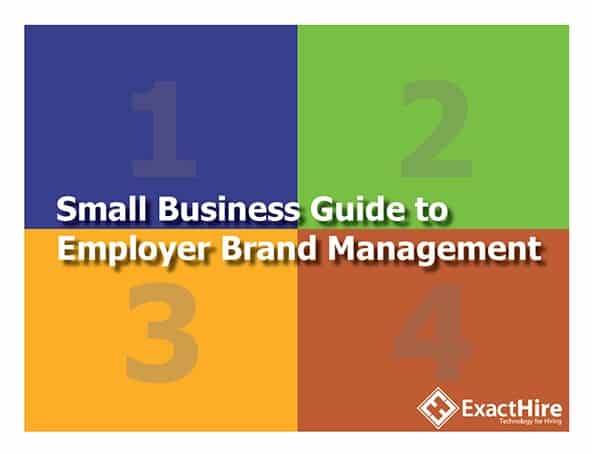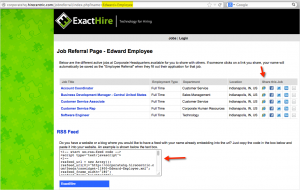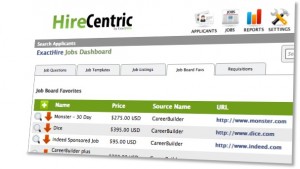5 Steps To Getting More Qualified Applicants
Finding the right candidate from a small pool of applicants is no easy task. Many times, hiring managers must settle for the “best available”, and sadly this often leads to new hires that simply don’t pan out. Before you know it, that hiring manager is looking to fill the same positions each year; effectively making them the “turnover manager”.
Turnover is inevitable at some point, but great hiring managers seek to minimize it by hiring individuals who are a fit for both the position and the company. This is not easy, as it requires searching for applicants who possess “something special” that cannot be easily found by parsing resumes or sometimes even by conducting an interview. So when these individuals are found, it’s important to not lose them.
The following steps will help your organization develop an applicant pool that consistently delivers more qualified applicants and, over time, minimizes employee turnover.
1. Maximize Channels
Believe it or not, many hiring organizations–of all sizes–are not promoting their open positions through all available channels. While being on every channel may not be practical, collaboration between Marketing and HR is vital in order to maximize awareness of job openings. Good recruiting software will include tools that easily leverage an organization’s existing channels, while also unlocking dozens more. And the best recruiting software will automate these job postings to multiple channels with just one click.
2. Promote Your Authentic Employer Brand
There is nothing worse than a job description or career page that appears generic–and I’m not just talking about the cheesy stock photography. Employers who want to hire and retain the best talent must work hard to cultivate and promote an enviable employer brand. This employer brand should be based on the foundation of a positive, authentic work culture that permeates all aspects of an organization–including the job descriptions and career page.
3. Provide An Applicant-Friendly Experience
With wide awareness of your organization and its job opportunities in place, it’s now time to focus on where the rubber meets the road: the application process. This is the time period where an organization begins building a relationship with applicants. And the first and most important component in any relationship is trust. By providing an applicant-friendly experience that imbues the positive qualities of your employer brand, an organization can go a long way to building this requisite trust. From there, make it easy by:
- Providing transparency (let applicants know what’s ahead)
- Staying on track (meet the expectations you set with applicants)
- Utilizing online applications (yes, some companies still ask for hard copies)
- Automating duplicate entries (no one wants to enter the same information twice)
- Making it easy to apply for multiple or future openings (an ATS can help with this)
4. Express Why You (The Hiring Organization) Want To Stay Connected
Inevitably, there will be some very good applicants that simply cannot be hired. How a hiring manager deals with these applicants will determine whether or not a talent pool for future hiring can be developed. An applicant status message of “Thank you for your interest. Please check back for future job openings” will simply not cut it.
While many HR professionals may feel that a canned “rejection” message is all they have time for, a little more effort at this point can save a lot of time down the road. Tell those qualified, “something special” applicants exactly:
- Why you found them impressive
- The types of opportunities that may exist at your organization in the future
- How you would like to stay in touch with them (and give them options for this).
5. Stay Connected With Your Applicant
Assuming you’ve implemented the above, the final step is to simply follow through with what you said you would do. And this is done by going back to Step 1 and, where possible, segmenting communications for the the “something special” talent pool. Here are some examples of what that could look like:
- Personalized invitations to apply for specific positions before they open
- E-newsletter specifically created for previous “something special” applicants
- Storing applicant information in an Applicant Tracking System for easy re-apply
- Brief, personalized emails that include company updates
- LinkedIn/Facebook group for prospective hires (Ex. “ACME Future Directions”
Getting More Qualified Applicants Begins With Building Relationships
Developing relationships with previous applicants is key to creating a high quality talent pool for hiring. These relationships do not need to include frequent interaction, but they must be marked by consistent value and sincerity. In this way, a growing organization is never challenged to find “something special” in a sea of “meh” applicants. And that, in turn, will go a long way toward minimizing employee turnover and its associated costs.
ExactHire provides hiring solutions for small- to medium-sized businesses that are seeking to hire the best talent for their organizations. To learn how ExactHire can assist you organization, contact us today!
Feature Image Credit: New York – Overhead Traffic Lights ![]() by Pete Bellis(contact)
by Pete Bellis(contact)





 I talk with groups frequently about the use of
I talk with groups frequently about the use of